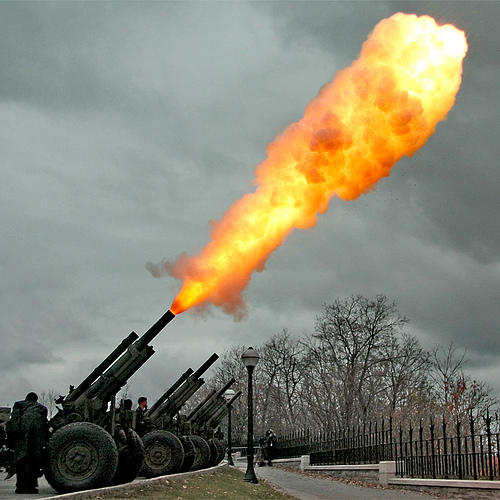
Reverse Instruction – U.S. History
U.S. History has to be one of the hardest classes to teach at an international school. When at best half your students would be from America and at worse none…yet our U.S. based curriculum says we have to teach it. So how do you motivate students who for the most part have no buy-in into U.S. History? The teachers do a great job of trying to look at U.S. History with a wider lens and that’s what this reverse instruction lesson is about.

Some rights reserved by ViaMoi
What are the characteristics of a civil war?
What were the causes of the U.S. Civil War?
So those are the questions posed to the class yesterday. The class was broken into two groups. Each group would research one of the questions and was paired with a partner researching the other question.
Our plan followed much the same process as the one I blogged about using with the IB English class. However instead of using the blogs to post their research the students in this class will be using our school Moodle install. We set up a forum for each question. Students will post their information in a forum where their partner will be able to read and comment on it. Everyone in the class of course can read all the entries making one big study guide for the class.
On Friday we’ll be doing a similar fishbowl routine as in the English class. The group who researched the characteristics of a civil war will talk about the U.S. Civil War while those that researched it will be in a chat room listening and commenting on the discussion. We then reverse the roles the second part of class.
The teacher Casey Corning, has been doing a lot of great things with tech this year, and is probably my best user of a teacher blog in the high school. She has a blog for each of the courses she teaches, and has helped to transform our senior seminar class into using the blogs as their semester long reflection. So it wasn’t a shocker when she stepped up to want to try this approach in her classroom. She then decided to take it one step further and we’re doing a little action research around it. She teachers two periods of U.S. History. So one period is getting the “traditional” teaching model while the class I’m helping with does the student-centered reverse instruction model. At the end we’ll talk to the kids and use the assessment to see if there was any knowledge difference in what the students learned with the two approaches. It’s always great when you have teachers willing to take a risk like this.
More to come on Friday.







I found this discussion interesting and wonder if I can be of help. I work for EDSITEment which is the free educational resource for K-12 teachers from the National Endowment for the Humanities. Each of our lessons is built around primary source documents and teaches both content mastery and 21st century skills
We have a curriculum unit on the American Civil War
http://edsitement.neh.gov/curriculum-unit/american-civil-war-terrible-swift-sword with two interactives
We also have a unit on the Growing Crisis of Sectionalism in America: The House Dividing
http://edsitement.neh.gov/curriculum-unit/growing-crisis-sectionalism-antebellum-america-house-dividing
with interactives
Finally you can find more resources on the Civil War here
http://edsitement.neh.gov/edsitement-lessons-slavery-crisis-union-civil-war-and-reconstruction
Jeff, I was so interested to read about what you’ve done with the concept of civil war. As an 8th grade American history teacher (at a girls’ school in Memphis, TN), I’ve been studying the concept of “flipping the classroom” but have had trouble thinking of just how I might do this with my classes. I’ve also been casting about for ways to incorporate current events. Your idea of grouping and pairing students sounds like a good one. I am curious to know if you grade this activity and just how you insure student accountability for research and genuine participation.
Thanks for sharing!